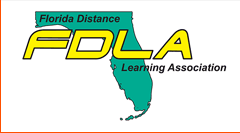A COMPARATIVE STUDY OF DIFFERENT 3D INTERACTION TECHNIQUES FOR VIRTUAL ENVIRONMENT AND THEIR SCOPES IN EDUCATION
Location
Waldorf
Start
1-16-2018 3:35 PM
End
1-16-2018 2:45 PM
Short Description
Many virtual reality (VR) techniques are used in different industries. VR can help students visualize difficult concepts that teachers are unable to convey through other means. The purpose of this presentation is to identify the VR features that work best in education. The objective of this session is to present the most common VR techniques used in education. In addition, the strength and weaknesses of those techniques will be evaluated.
Abstract
Providing a high-quality online education is becoming an important mission of higher education institutions. Providing online students with an educational experience that is similar to the traditional face-to-face courses is challenging. VR can deliver experiences comparable to live classrooms within a single platform. In addition, it allows education to become truly interactive.
Through the virtual environment, students can access the equivalent classroom facilities that allow them to be successful academically and reduce the feeling of isolation. They can interact with teachers and other fellow students and can perform experiments that bring the content to life. More importantly, virtual reality gives a better understanding of the subject matter, increases motivation, and improves the attention level of the students compared to traditional classes.
The presenters will expand on the most common virtual reality techniques used for educational purposes, their advantages, and drawbacks. The discussion will include some inexpensive tools that require no additional space or resources. Some immersive VR techniques necessitate large initial capital investment and are very effective for student learning. This presentation will provide examples of how VR is being used in education as well as allow attendees to experience how VR can be implemented in the classroom. This presentation will help attendees decide what VR technologies will be best for their subject and pedagogical needs.
Some educational applications will be demonstrated and participants will use the Google Cardboard VR platform as a head mount for a smart phone to experience, encourage interest and develop VR applications for their institutions.
Format
Concurrent Session
Institutional level targeted
Higher Ed
Moderator
Victoria Brown, FAU
A COMPARATIVE STUDY OF DIFFERENT 3D INTERACTION TECHNIQUES FOR VIRTUAL ENVIRONMENT AND THEIR SCOPES IN EDUCATION
Waldorf
Providing a high-quality online education is becoming an important mission of higher education institutions. Providing online students with an educational experience that is similar to the traditional face-to-face courses is challenging. VR can deliver experiences comparable to live classrooms within a single platform. In addition, it allows education to become truly interactive.
Through the virtual environment, students can access the equivalent classroom facilities that allow them to be successful academically and reduce the feeling of isolation. They can interact with teachers and other fellow students and can perform experiments that bring the content to life. More importantly, virtual reality gives a better understanding of the subject matter, increases motivation, and improves the attention level of the students compared to traditional classes.
The presenters will expand on the most common virtual reality techniques used for educational purposes, their advantages, and drawbacks. The discussion will include some inexpensive tools that require no additional space or resources. Some immersive VR techniques necessitate large initial capital investment and are very effective for student learning. This presentation will provide examples of how VR is being used in education as well as allow attendees to experience how VR can be implemented in the classroom. This presentation will help attendees decide what VR technologies will be best for their subject and pedagogical needs.
Some educational applications will be demonstrated and participants will use the Google Cardboard VR platform as a head mount for a smart phone to experience, encourage interest and develop VR applications for their institutions.

